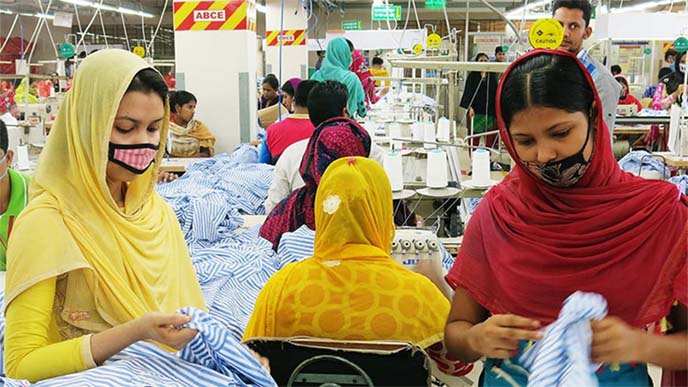
Reuters :
The risk of modern slavery in Asian manufacturing hubs has surged and is set to worsen with the economic impact of the new coronavirus, increased labour rights violations and poor law enforcement, a global index found on Friday.
For the first time, India and Bangladesh were in the “extreme risk” category, joining China and Myanmar in a group of 32 countries with the worst risk of slave labour, the Modern Slavery index by risk analytics company Verisk Maplecroft found.
The risks faced by workers in Cambodia and Vietnam also rose to their highest in four years, taking 32nd and 35th places in the ranking of 198 countries which identified North Korea, Yemen and Syria as the three worst nations for slave labour.
“What makes the situation even more alarming is that modern slavery risks are set to intensify as countries grapple with the economic fallout of the pandemic,” said Sofia Nazalya, a human rights Analyst at Verisk Maplecroft.
“As more workers are pushed into the informal sector, they will be at greater risk of facing more exploitative forms of work, some of which could amount to forced labour conditions,” she told the Thomson Reuters Foundation in emailed comments.
Asian garment workers supplying global fashion brands lost up to $5.8 billion in wages from March to May, the Clean Clothes Campaign pressure group said last month, as the COVID-19 pandemic led to store closures and cancelled orders.
About 60 million people work in Asia’s garment industry and falling sales have put many jobs at risk. Laid-off workers are likely to turn to exploitative jobs or may put their children to work to cope with the loss of earnings, industry experts say.
“Even in the same jobs, the conditions have become more exploitative,” said Apoorva Kaiwar, Regional Secretary for South Asia at IndustriALL Global Union, a federation that represents workers in 140 countries.
“Our affiliates have reported wage cuts in existing jobs as well as removal of facilities such as transport and canteen with subsidised food
The risk of modern slavery in Asian manufacturing hubs has surged and is set to worsen with the economic impact of the new coronavirus, increased labour rights violations and poor law enforcement, a global index found on Friday.
For the first time, India and Bangladesh were in the “extreme risk” category, joining China and Myanmar in a group of 32 countries with the worst risk of slave labour, the Modern Slavery index by risk analytics company Verisk Maplecroft found.
The risks faced by workers in Cambodia and Vietnam also rose to their highest in four years, taking 32nd and 35th places in the ranking of 198 countries which identified North Korea, Yemen and Syria as the three worst nations for slave labour.
“What makes the situation even more alarming is that modern slavery risks are set to intensify as countries grapple with the economic fallout of the pandemic,” said Sofia Nazalya, a human rights Analyst at Verisk Maplecroft.
“As more workers are pushed into the informal sector, they will be at greater risk of facing more exploitative forms of work, some of which could amount to forced labour conditions,” she told the Thomson Reuters Foundation in emailed comments.
Asian garment workers supplying global fashion brands lost up to $5.8 billion in wages from March to May, the Clean Clothes Campaign pressure group said last month, as the COVID-19 pandemic led to store closures and cancelled orders.
About 60 million people work in Asia’s garment industry and falling sales have put many jobs at risk. Laid-off workers are likely to turn to exploitative jobs or may put their children to work to cope with the loss of earnings, industry experts say.
“Even in the same jobs, the conditions have become more exploitative,” said Apoorva Kaiwar, Regional Secretary for South Asia at IndustriALL Global Union, a federation that represents workers in 140 countries.
“Our affiliates have reported wage cuts in existing jobs as well as removal of facilities such as transport and canteen with subsidised food

